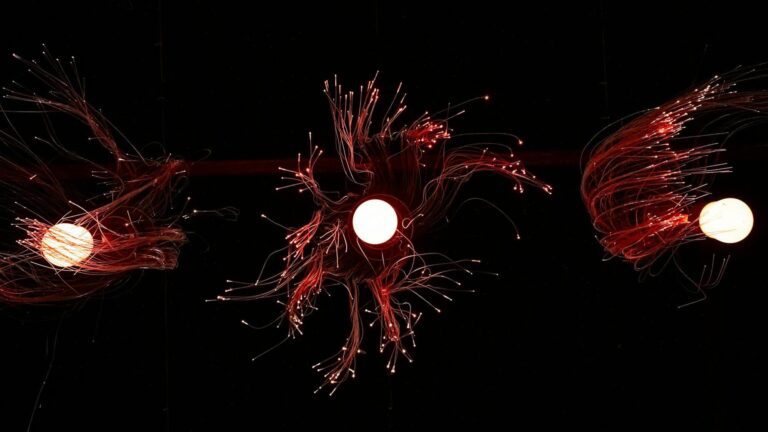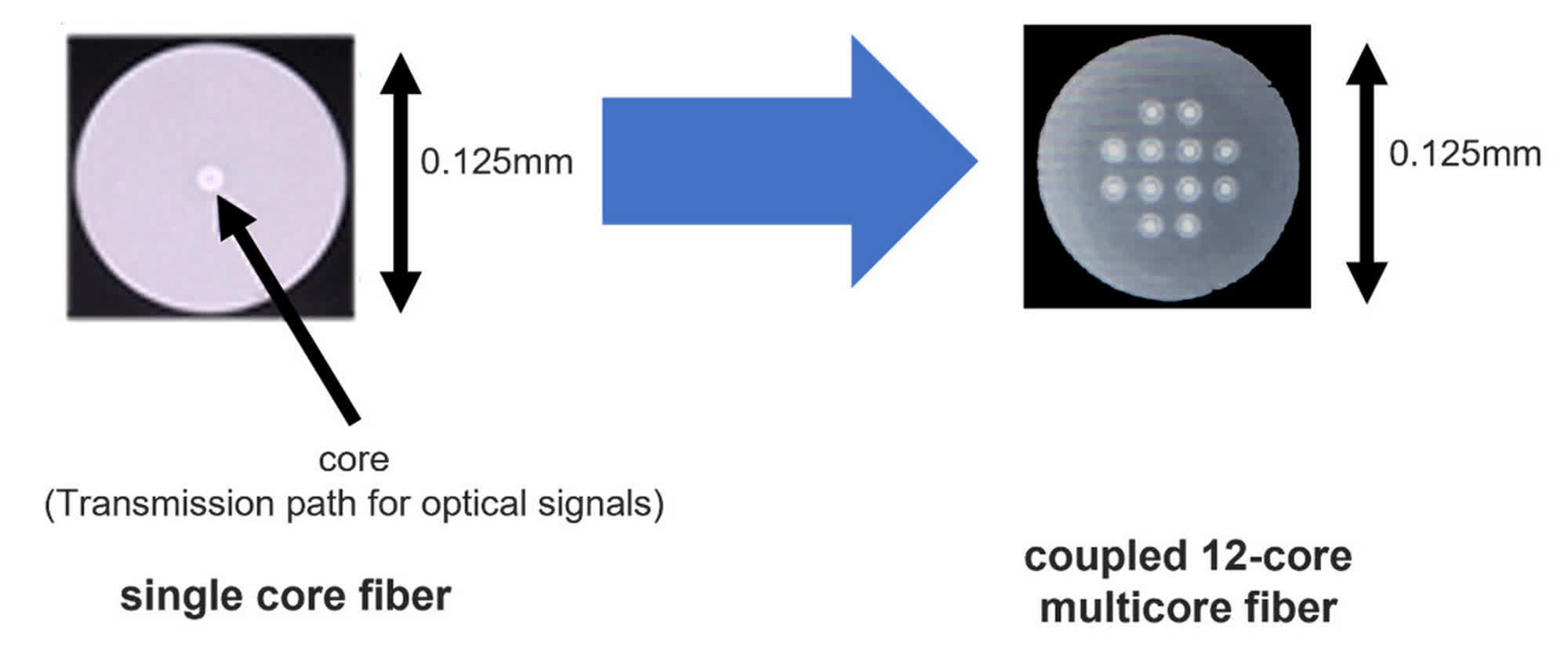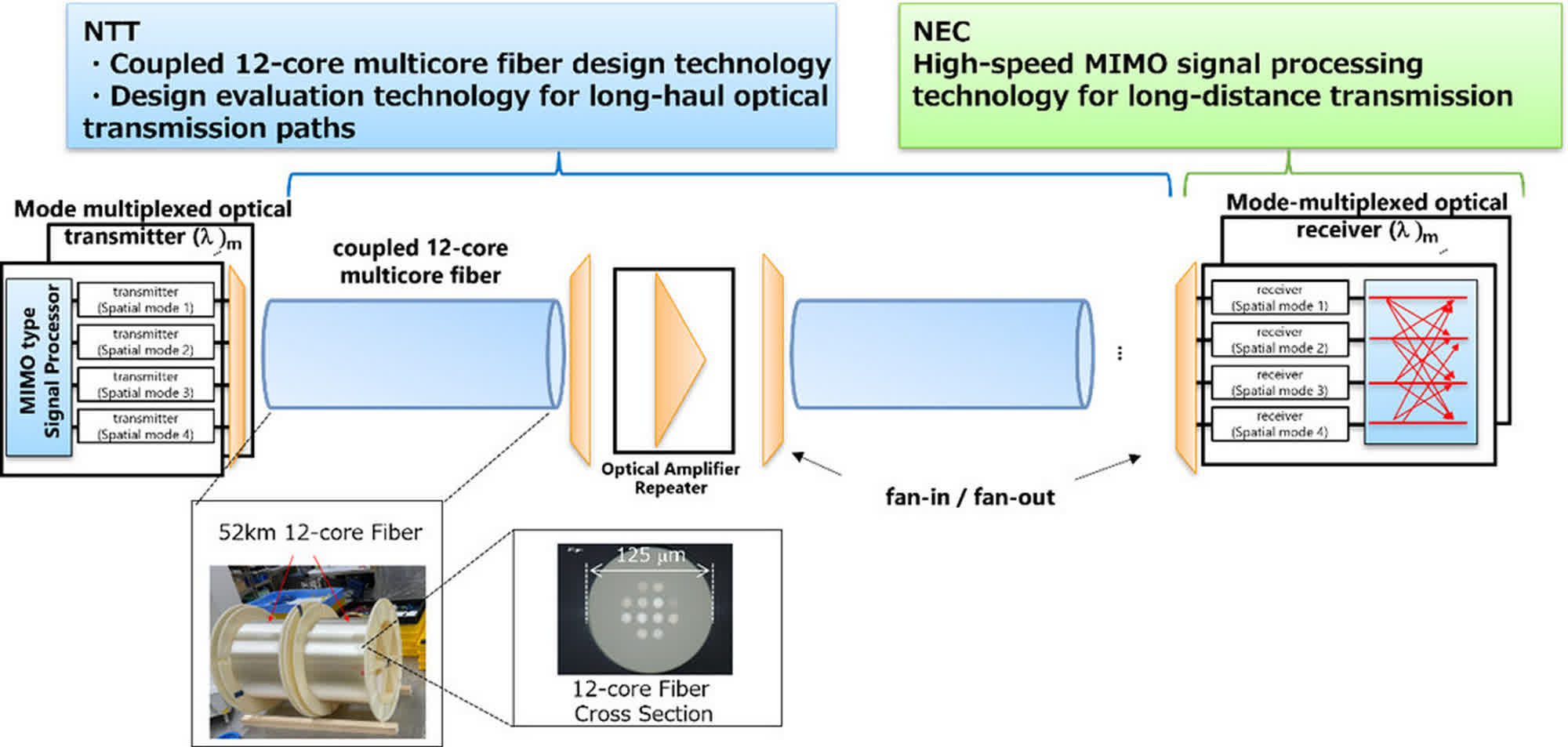
[ad_1]
The big picture: Fiber optics have increased network capacities significantly, but submarine cable technology has remained largely static in recent years. However, that could change in the near future following a recent proof-of-concept experiment by Japan’s NTT and NEC, who announced that their model could deliver a 12-fold increase in the capacity of submarine cables.
In a press release last week, the two Japanese tech giants said that their “first-of-its-kind transoceanic-class 7,280km transmission experiment” used a coupled 12-core multicore fiber consisting of 12 optical signal transmission paths in a standard optical fiber with a 0.125 mm outer diameter. According to NTT and NEC, the success of the experiment could pave the way for a “next-generation transmission infrastructure technology” that will help build large-capacity optical networks, including future optical submarine cables.
Current submarine cables use single-core fiber with one optical transmission path called a core within a single fiber, but researchers have been trying to add more cores to the cables without increasing their diameter. The two companies now claim to have successfully demonstrated that it could be done to drastically increase the capacity of optical networks.
However, transmitting signals over large distances using the experimental technology could present its own set of problems, thanks to crosstalk that could degrade data quality. According to NTT and NEC, it becomes difficult to receive signals accurately over large distances due to “non-uniformity of delay and loss between optical signals.”
Thankfully, researchers believe that this problem can be fixed by using the MIMO (Multiple input multiple output) technology that is widely employed by the telecom industry to separate interfering radio signals. While MIMO has only been commercially used for wireless communications until now, NTT and NEC say that they have developed new technology that could help improve optical networks.
While the new technology seemingly worked in the 4,523-mile test network under controlled conditions, it remains to be seen if it will prove to be useful in the real world. NTT and NEC believe the new tech could be deployed in the 2030s, possibly offering a massive boost to transcontinental submarine communication to handle the expected rise in data consumption over the next decade.
[ad_2]

